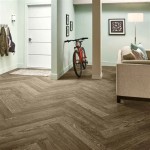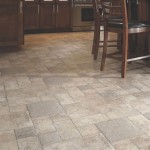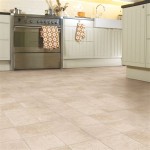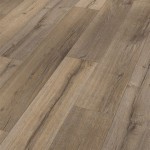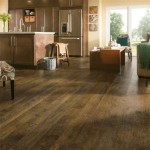Laminate Vinyl Flooring: A Comprehensive Guide
Laminate vinyl flooring has rapidly gained popularity in recent years due to its versatility, durability, and aesthetic appeal. It offers a cost-effective solution that mimics the natural beauty of hardwood, tile, or stone flooring while providing exceptional wear resistance and water resistance.
Construction and Composition
Laminate vinyl flooring consists of multiple layers that contribute to its performance and durability. The top layer is a protective wear layer that resists scratches, stains, and fading. Beneath that lies a decorative layer that provides the flooring's visual appearance. The core layer, typically made of a high-density fiberboard, ensures stability and moisture resistance. Finally, the backing layer provides additional sound insulation and prevents moisture from seeping through.
Advantages of Laminate Vinyl Flooring
Laminate vinyl flooring offers numerous benefits over traditional flooring options:
- Durability: Its wear-resistant top layer withstands heavy foot traffic, making it suitable for both residential and commercial applications.
- Water Resistance: Unlike hardwood or laminate flooring, laminate vinyl flooring is waterproof and can withstand spills and moisture, making it ideal for kitchens, bathrooms, and basements.
- Affordability: Compared to natural hardwood or tile, laminate vinyl flooring is a more cost-effective option that provides a comparable aesthetic.
- Ease of Installation: Its click-and-lock system allows for quick and easy installation without the need for nails or glue, saving time and labor costs.
- Aesthetic Versatility: Laminate vinyl flooring comes in a wide range of styles and colors, allowing you to create a unique and personalized look that complements any décor.
Maintenance and Care
Maintaining laminate vinyl flooring is relatively simple. Regular sweeping or vacuuming removes dirt and debris. For deeper cleaning, use a damp mop with a mild detergent specifically designed for vinyl flooring. Avoid harsh chemicals and abrasive cleaners, as they can damage the protective wear layer.
Installation Considerations
Before installing laminate vinyl flooring, ensure that the subfloor is level, clean, and dry. Use an underlayment to provide additional soundproofing and moisture resistance. For best results, follow the manufacturer's installation instructions carefully.
Conclusion
Laminate vinyl flooring is a smart and stylish choice for homes and businesses alike. Its durability, water resistance, affordability, ease of installation, and aesthetic versatility make it an excellent alternative to traditional flooring options. Whether you're looking to upgrade the décor of your living room or the functionality of your kitchen, laminate vinyl flooring is a practical and beautiful solution that will meet your needs for years to come.

Vinyl Vs Laminate Flooring Pros Cons And Differences 2024 Forbes Home

Laminate Vs Vinyl The Home Depot

Laminate Vs Vinyl Flooring Comparison Guide

Luxury Vinyl Flooring Wichita Okc Pro Installation
Everything You Need To Know About Vinyl Flooring Tarkett

Laminate Vs Vinyl Flooring Which Is Better For You

Difference Luxury Vinyl Plank And Laminate Flooring Carpet Land

Vinyl Vs Laminate Flooring What S The Difference

Laminate Vs Vinyl Flooring Which Is The Best Option

A Surfaces Piedmont Balsam 20 Mil X 7 In W 48 L Lock Waterproof Luxury Vinyl Plank Flooring 23 8 Sqft Case Hd Lvr5015 0011 The Home Depot
Related Posts


